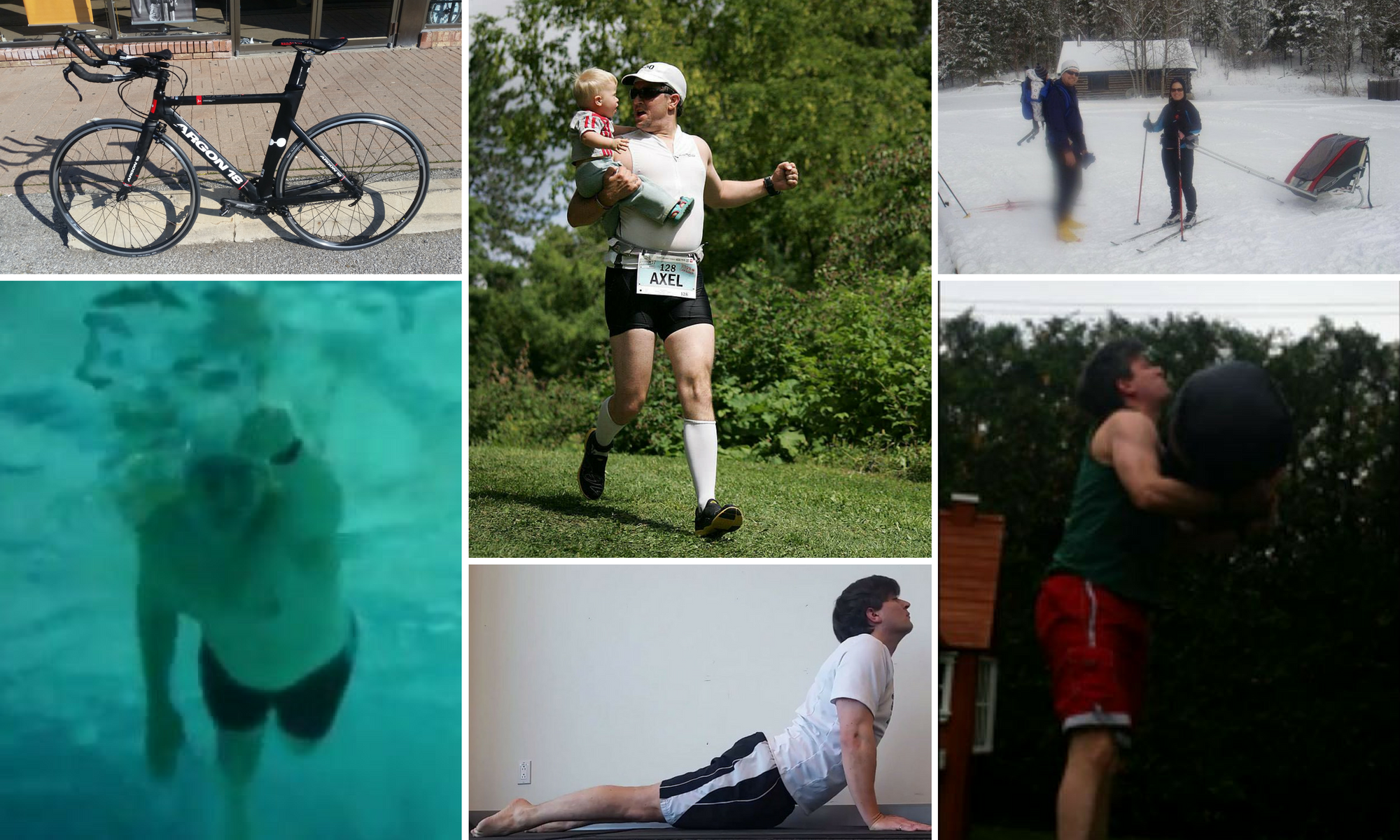As much as the off-season is more of a mental construct than a true necessity due to climate; I’ve found myself unable to train and exercise to the degree I’d like in recent weeks (largely though not solely due to a health issue). I was being kept from the bike trainer, I was kept from running, swimming and the gym for any strength training. When I find myself stymied in my efforts to get in shape, I have a bad habit: I’ll dive into exercise with abandon, rather than easing in to accommodate a body that isn’t ready for the sudden shock. So I found myself saying yes to a ‘Welcome Back to the Mats 2012’ session of my old club.
This is a triathlon and multi-sport blog, so I’m way off-topic here, but on the other hand, it’s my blog, and I think I can swing a little justification of this post. And if you still have a problem with that, you have to face these two:
Let me give you a little background. From the Jitsu Foundation website: “Jitsu is a martial art based on the traditional styles of Jiu Jitsu that originated and developed in medieval Japan. The core of the art comprises a system of throws, joint locks and strikes. Based on the principal of using an aggressor’s energy to their own disadvantage, Jitsu skills can be used by men, women and children to counter aggressive situations ranging from unwanted harassment to armed physical assault.”
(The Jitsu Foundation is the organizational body for Shorinji-Kan Jiu-Jitsu, the style I practice/practiced).
So here are the top similarities between jiu-jitsu and triathlon:
- Multi-disciplinarian. A full jiu-jistu technique might involve blocking a punch, a counter-strike, a joint lock (to put the aggressor off-balance), a throw, then a restraining technique. So, a jitsuka (a practitioner of jiu-jitsu) needs to be well-versed in many categories of techniques (including chokes, pressure points, etc.) where most other martial artists get to stick to one or two categories. Swim, Bike, Run…. Strike, Throw, Lock. Get it?
- Technical Geekery. Triathletes are often called tri-geeks – even the more casual participants will use Garmin’s or Apps to track their speed, pace, distance and heart rate. The hard-core know their anaerobic threshold, VO2 Max, the materials science that goes into making their bikes faster or lighter, and nutritional tweaks to get the best out of themselves on race day. Jiu-jitsu uses a variety of anatomical principles and physics (like torque and leverage) to ‘use the aggressor’s energy (or strength) to their own disadvantage’. There is a technical finesse that occurs at higher levels of proficiency that lends itself well to the the more analytical or ‘geeky’ mind.
- Masochism. This may not be universal across all styles of jiu-jitsu (and yet also not unique to jiu-jitsu as a martial art), but doing a grading (where you are testing for the next belt level) is most often a painful, tortuous experience. During them, you question why you bother to do this in your free time, and afterwards, the rewards make you forget (or at least mentally diminish) the trauma of what you just went through. Just like a long bike ride, run or brick.
- Efficiency. An attacker can be decimated by a good jitsuka who hardly seems to be doing anything at all. Proper technique means not using your own strength so much as that of your attacker, ideally with a relaxed demeanour (at least in terms of your outward disposition) rather than gritting your teeth and huffing and puffing. The motto is ‘Maximum Effort, Minimum Impact’. Triathlon has a lot of energy conservation, where the work you do to improve technique is meant to make sure you will have enough fuel in the tank to finish the race instead of wasting energy on unnecessary movement.
And here’s where they are the most opposite of hobbies:
- Social. You absolutely need at least one partner to execute a jiu-jitsu technique. In fact, the more (greater variety of) people you practice on, the better. Triathlon and endurance sports can be trained in groups, but they don’t have to be, and for me, the appeal has always been in the flexibility in going solo… I like the time to clear my thoughts, and doing it when my schedule allows, not by appointment.
- Fitness. Being in good shape is a good idea in martial arts, and I don’t want to say it isn’t good exercise, however… ‘Maximum Impact, Minimum Effort’ – remember? I know excellent jitsuka and high ranked instructors who smoke regularly… I can’t say the same for triathletes.
- Indoor/outdoor. Triathlon can be done indoors and jiu-jitsu can be done outdoors, but usually… not so much.
Anyway, that’s enough of a digression for this blog, I hope to bring things back to the core of triathlon in the next entries. Thanks for reading!









